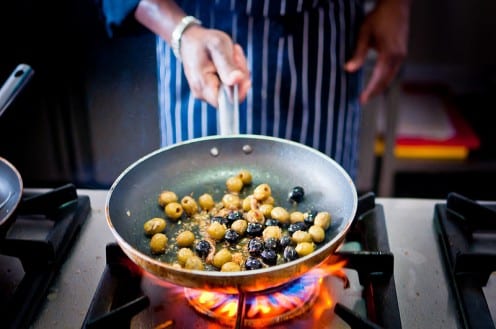Cooking Soup Online and Being a Good Mother
By Xin Yuan Wang, on 9 March 2015

Images of soup on Chinese social media
In order to analyze people’s postings on QQ or WeChat I had to spend a lot of time viewing and recording my informants’ online postings, especially the photos and other images they posted on their social media profiles, and then categorize different kinds of images into different genres.
Among all the images, ‘food’ photos turned out to be one of the major genres which people frequently post online. ‘You are what you eat’- food is such an important part of Chinese perceived cultural experience, the use of food to express sophisticated social norms is highly developed in China (1). As Kao Tzu, a Chinese ancient philosopher said, ‘Shi Se Xing Ye’ (the appetite for food and sex is human nature). And a Chinese saying goes ‘Min Yi Shi Wei Tian’ (Food is the paramount necessity of the people).The importance of food in everyday life is also reflected in greetings. For instance, instead of asking “How are you?” it is quite normal to ask “Have you eaten?” Division of a stove is symbolic of family division (2). One of the most insightful anthropological discussions of communal dining in China is Waston’s (1987) study on Sihkpuhn (to eat from the same pot) banquet in a Hong Kong village. As Waston argues, eating from the same pot serves to ‘legitimize a social transition’, for instance, a marriage without Sihkpuhn feast is not considered legitimate; the social birth of males and heir adoption are both marked and celebrated by Sihkpuhn feast. This is why the family reunion meal is so important for every family member, it is not only a time to enjoy delicious and various foods and drinks, but an occasion to unite a family together. Every family member in the reunion dinner, eating from the same pot, represents a family collectivity and is therefore “eating for others”. It also seems that, especially among rural migrants, food and the feeling of ‘being at home’ when one is working far away from one’s homeland is closely connected.
All the previous study on Chinese food as above seems to have provided the convincing reason of ‘why food postings are so popular among Chinese people on social media’. However, curiously, when I counted the ‘food’ photos and images I found there is one specific kind of Chinese food was most popular among young mothers, which is soup. Why soup? The answer seems go beyond the Chinese social norms about ‘food’ in general- there must be something more specifically about mothering.
During my field work, I found that one of the typical criteria of a ‘good mother’ among my informants is to ‘cook well’ as many of them put it. From time to time, people told me that the thing they miss most when working outside is their mother’s cooking. Here the social implication of mother-child bond through the image of mother’s cooking seems to go beyond the real taste of the food. It is widely believed that food is a kind of medicine which helps to strike the balance of the ‘Qi’ (air, vitality) of one’s body in daily life, according to the philosophy of Chinese cuisine. In addition, among all kinds of Chinese cuisine, soup is unquestionably regarded as the one which can nourish one’s ‘Qi’ best. In my field site, the best way people could treat, me as they believed, was to feed me a lot of homemade food in overwhelming and non-stop manner. And from time to time it felt extremely difficult to say no when women started their lines like “oh it took me the whole day/ whole afternoon to prepare and cook this soup, and you have to have some, very good for you body!” Cooking a decent soup usually requires a very long time, a lot of patience, delicate heat control and decent knowledge of food material.
In a way, the process of preparing and cooking a decent soup is similar to ‘mothering’ – it’s always time-consuming, and you need a lot of patience, understanding and good control of the ‘heat’ in the relationship. Thus the frequent sharing of soup photos seems to just reinforced the widely accepted image of a good mother.
It’s universal that women feel anxious about becoming a mother, and a wise strategy to deal with such anxiety among young mothers in my field site seems to be posting a lot of ‘soup’ photos on their social media profiles. That is to say, before they cook the ‘real’ soup for their kid, they have cooked the soup online to prepare to be a good mother.
Reference:
(1) Watson, James L. 1987. “From the Common Pot: Feasting with Equals in Chinese Society”, in Anthropos, 1987 (82): 389-401.
(2) Stafford, Charles. 1995. The Roads of Chinese Childhood: Learning and Identification in Angang. Cambridge: Cambridge University Press. p4
 Close
Close







